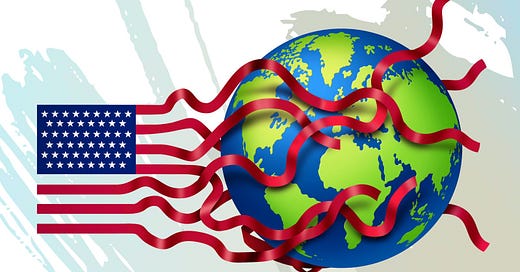Three Oceans Two Fronts
Across three oceans; Atlantic & Indo-Pacific; &, two fronts; First Island Chain centred on Taiwan, & Baltic to Black Sea Cordon centred on Ukraine, the United States seeks hegemonic resurrection
UPDATE: Today, the Long Mekong Daily publishes a single article on the evolution of US Grand Strategy and the rapidly expanding oppositional political and economic forces coalescing in the Global South.




